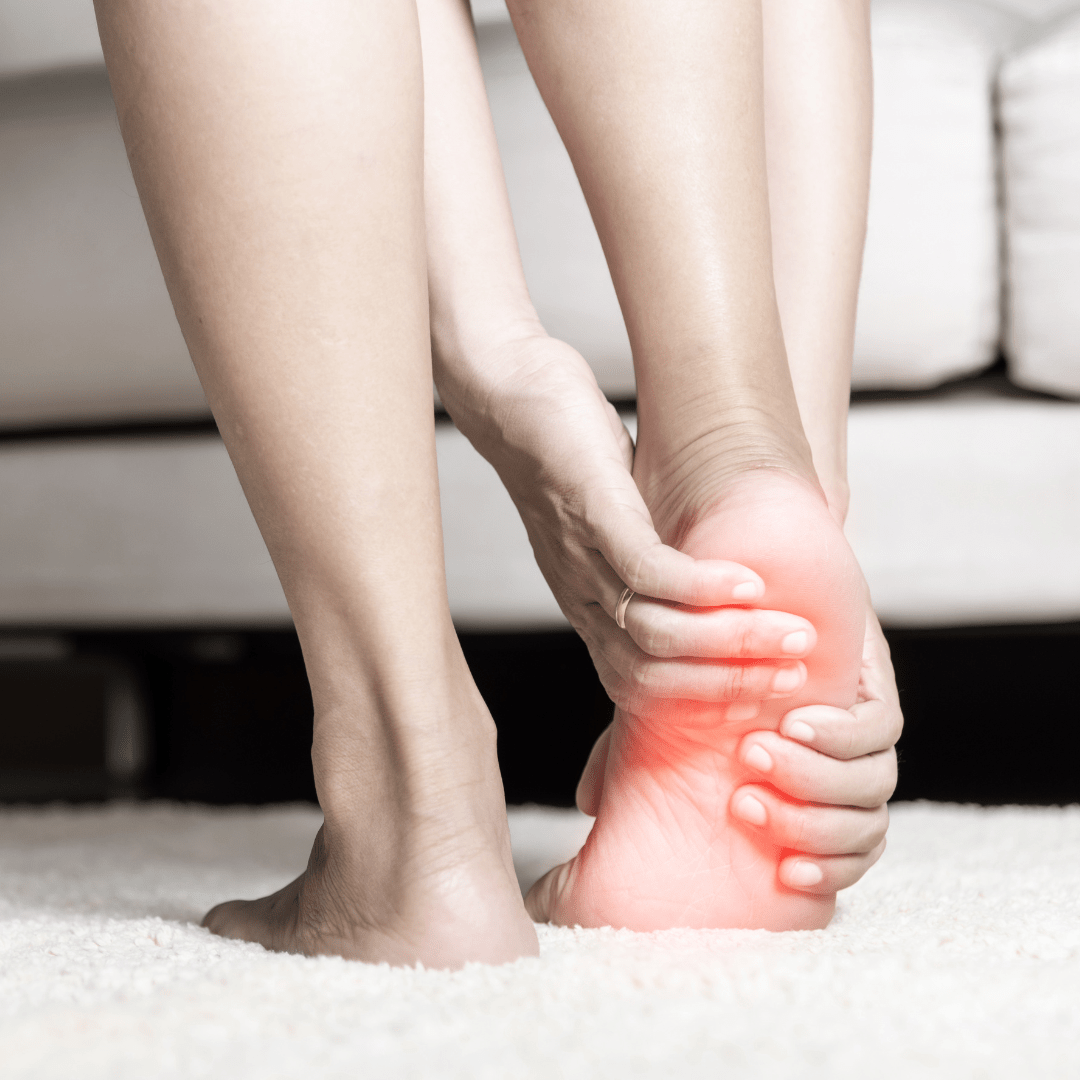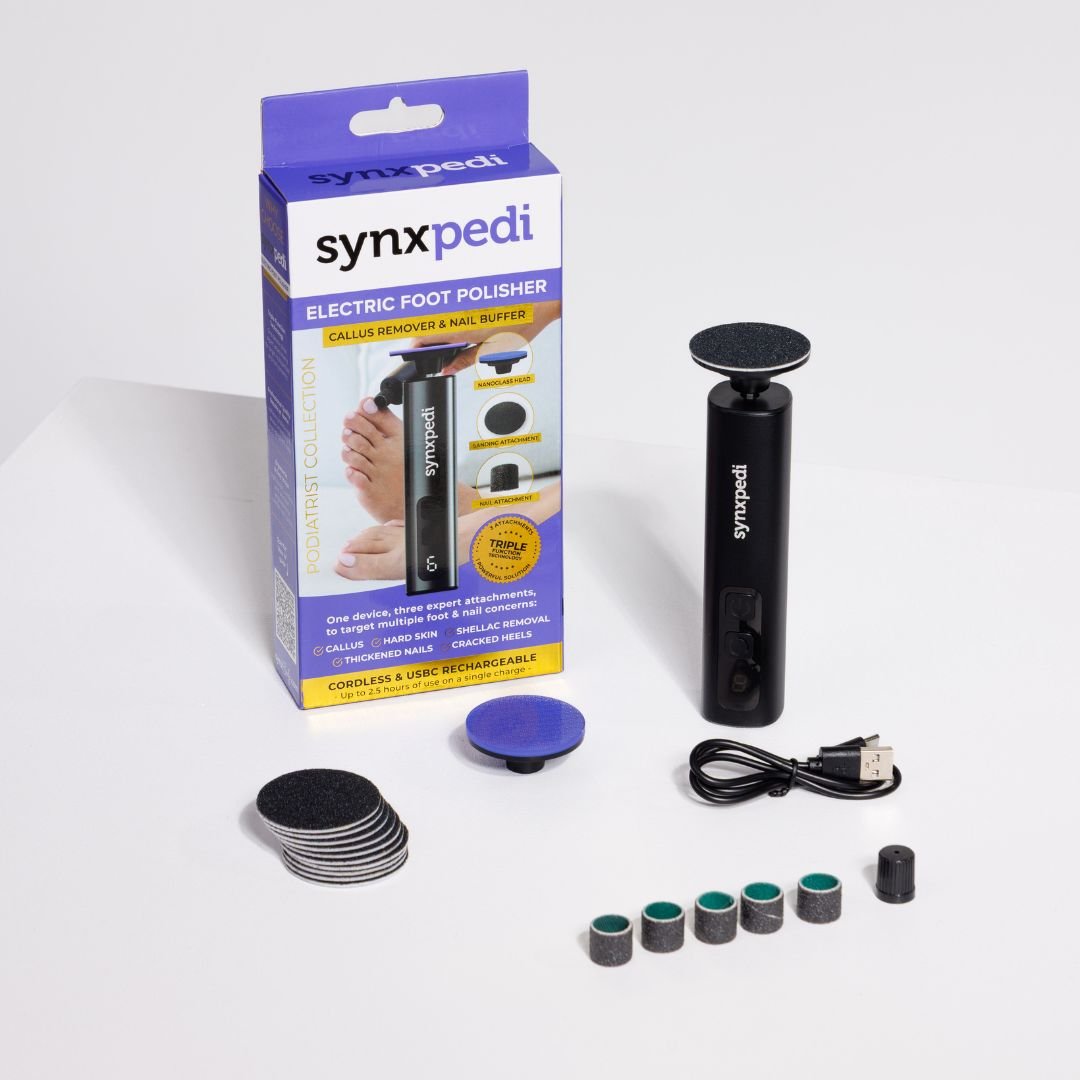So, before we say goodbye to the long, sunny days and soft balmy nights, let’s take a moment for the two vital parts of our body that take us everywhere over the summer – our feet!
Tips for summer foot care
Our feet can bear the brunt of hot weather, (thongs, we’re looking directly at you), and sun exposure, so this is the perfect time to look at some foot pampering.
To help you develop a healthy care routine and keep your feet happy and healthy, we’ve put together a list of tips for footcare that anyone can try at home.

- Remove calluses
Calluses are an area of thick hardened skin, and usually form as a result of too much pressure or friction on one area of the skin, such as by wearing shoes that are too tight or the way we walk They can be uncomfortable and unsightly but are actually a result of your body engaging in a protective measure.
It is important to remove any calluses to improve comfort whilst walking and also reduce the risk of infection and/or deformity due to increased pressure in the area.
Cracked calluses should be removed by a medical professional to prevent them from getting infected, otherwise you can try some home remedies:
- start with a foot soak
- use a pumice stone
- massage in plenty of moisturiser
- Heal cracked heels
Your heels are often exposed more than other parts of the foot and as a result they tend to dry out more. The heel also has thicker skin, which means that it's less penetrable and it'll take a little more effort to lock moisture in. This combination is why many of us face cracked heels at some point.
The best way to treat and repair cracked heels is with a urea-based cream such as Dermal Heel Balm. The Urea ingredient, also known as carbamide-containing cream, is a medication applied to the skin to treat dryness and itching and encourage water hydration making the skin more supple.
Going forward, maintain soft heels by regularly soaking your feet in warm water, choosing shoes that protect and support the foot and avoiding open footwear as much as possible (because closed in footwear will help your skin to retain its moisture).
- Look for barrier creams to maintain soft skin
If dry skin is your issue, barrier creams such as Vaseline and paw-paw ointment can offer high quality protection for your feet. The clue is in the name – ‘barrier cream’ – as it acts as a barrier between your skin and elements such as heat, dryness, or irritants.
If you have deep heel cracks and thick calloused skin you will need something a little stronger than a barrier cream. You will need a urea based cream that helps to reduce hard skin and also soften cracks by encouraging water uptake.
- Slough off dead skin
It may not be pretty, but removing dead skin is a crucial step in any foot care routine, as you can then heal and prepare the new skin on your feet. There is no point just throwing a tub of moisturiser on your dead skin.
The best way to do this is straight after a foot soak, which will soften dry skin and make it easier to remove the dead skin. Simply fill a foot tub with warm water (you can either just use the water as is, or add a softening product), soak your feet for 20-50 minutes, then dry them using a towel and take a pumice stone to the skin.
If you have thick calloused skin and corns, it is best to see a podiatrist and have it debrided or removed (a painless procedure) which will relieve any painful symptoms immediately. This is best followed up by regular pumice stone and cream use for best results.
- Soak your feet and with Epsom salts once a week
I mean who doesn’t like a good foot soak? Not only is it a luxurious way to unwind after a long day, treating your feet to a soothing foot soak with Epsom salts then applying a nourishing and hydrating cream can really help repair dry or tired, achy feet.

- Limit how often you wear thongs
Thongs are less supportive and can make our heels very dry and tough. Try to limit wearing thongs to small durations of time, such as when at the beach and at other times.
- Enjoy a regular foot massage
Regular massage can release tension and tight muscles, stimulate blood flow, and soften skin. Make sure you incorporate regular massage into your weekly foot care routine, and consider seeing a podiatrist
- Grab some Synxgeli Heel Socks
Synxgeli Heel Socks can provide a barrier at the back of the heel that may be aggravated when wearing shoes as well as protecting against cracked heels.
For best results, use the heel socks at night-time directly after applying emollients and creams.
Bonus summer foot care tip
A bonus tip to keep feet well looked after over summer - don’t forget to apply sun cream to your feet and pay attention to the nails too with regular skin checks. Melanoma’s can occur on your feet and in your toenails too!
Browse our online shop and free yourself from cracked heels, painful calluses, and achy feet.






